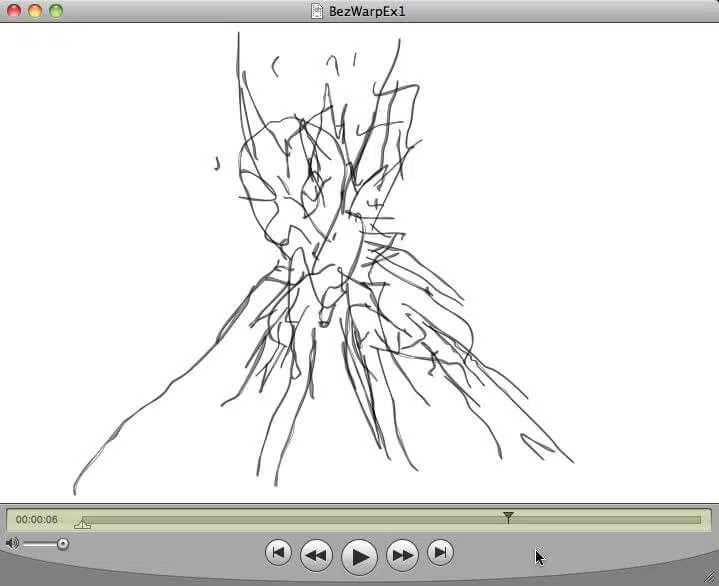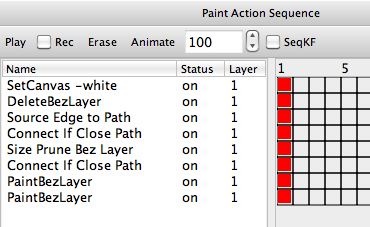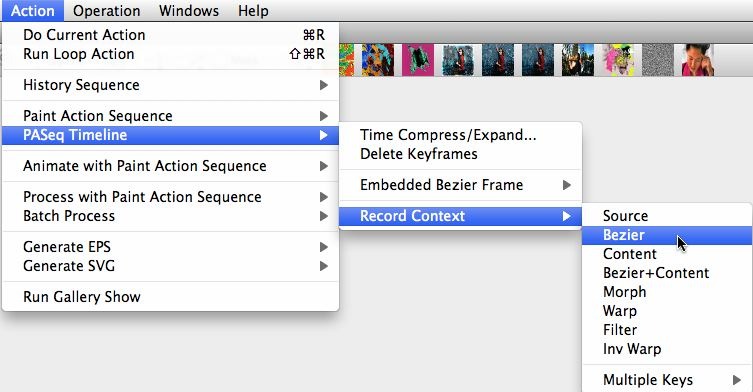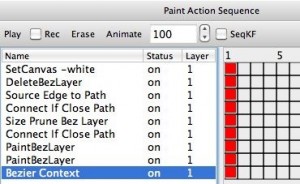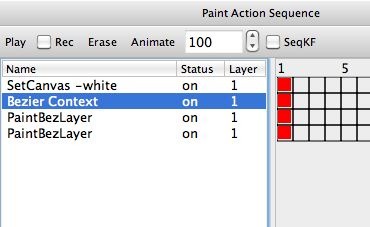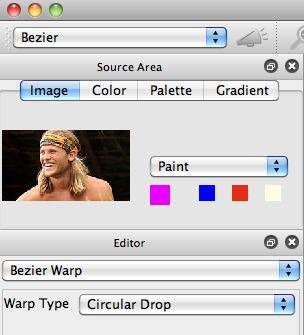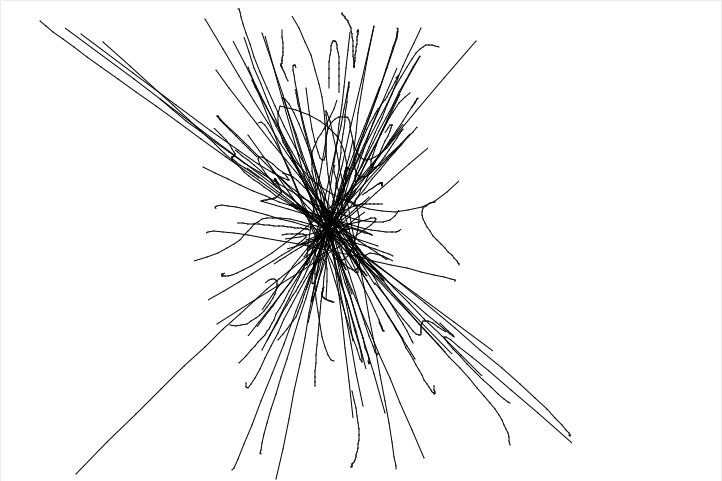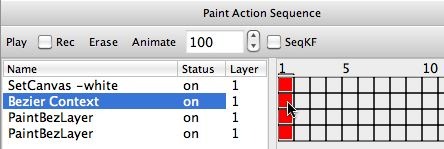Today’s post shows how to take the stylized set of bezier sketch paths we generated in yesterday’s post, and use them in a Bezier Context action step in a PASeq to generate keyframed bezier path movement over time. This lets us build an animated painted sketch effect based on the keyframe movement of the bezier paths over time. For this simple example we’ll just use 2 keyframes, based on the original bezier sketch effect derived in yesterday’s post and a second bezier warped version of those original bezier sketch paths.
The first gallery image below shows the hand edited stylized bezier paths we generated in yesterday’s post. We’re assuming you still have that set of stylized bezier paths in the bezier path frame. We discussed how to generate them in yesterday’s post. There are File : Export and File : Import menu commands that let you export and import a Bezier Path Frame so you can save and restore sets of bezier paths you have manually edited.
Here is the preset 52611BezWarpSketchAnim.paseq
The goal for today’s post is to show how you can keyframe this set of bezier paths to build dynamic movement over time to create an animating painted sketch. I wanted to use the same 2 paint presets we used in the last 2 day’s posts, so I loaded the PASeq we used in the post 2 days ago (2nd gallery image above). I then ran the Action : PASeq Timeline : Record Context : Bezier menu command (3rd gallery image above). This menu command takes the contents of the current bezier path frame and stores it in a newly generated Bezier Context action step (as shown in the 4th gallery image above at the bottom of the PASeq action step list).
A Bezier Context action step lets you record a set of bezier paths in one of the action step’s keyframes. When you initially run the menu command described above to generate a new Bezier Context action step, the current contents of the bezier path frame are recorded as the initial frame time 1 keyframe for the Bezier Context Action step. You can think of a Bezier Context action step as a container for sets of bezier paths. When a Bezier Context action step is played back, it replaces the current bezier path frame with the set of bezier paths stored in the Bezier Context action step.
By using multiple keyframes, you can store more than one set of bezier paths in one Bezier Context action step. When a Bezier Context action step is played back at a current frame time that is located between 2 different keyframes, you end up with an interpolated set of bezier paths (derived from keyframe interpolating the 2 sets of bezier paths stored in the 2 keyframes) placed in the current bezier path frame. So Bezier Context action steps are a way to store sets of bezier paths in a PASeq, and to generate keyframe interpolated movement of them to build dynamic bezier path based animation effects over time.
I edited the PASeq shown in the 4th gallery image above to remove the old auto-generated path action step and to move the Bezier Context action step from the bottom of the list to before the 2 PaintBezLayer action steps (5th gallery image. Remember, the first keyframe for my Bezier Context action step recorded by hand edited stylized bezier sketch paths generated in yesterday’s post. I actually want that sketch to be the end result of the bezier path movement in the dynamic animation we are going to generate.
So I adjusted the PASeq timelien to the end of the 100 frame animation I had specified at the top of the PASeq palette. I then option clicked the Bezier Context action step keyframe cell at frame time 100 (6th gallery imageabove). This records the same set of bezier paths I initially recored for frame time 1 at frame time 100. I am now free to edit the bezier path frame to change the positions and shapes of the sketch’s bezier paths, and then record the modified bezier paths at frame time 1 for the Bezier Context action step.
To modify the sketch paths in the bezier path frame, I switched to Bezier Warp operation mode and used the Circular Drop interactive bezier warp option (7th gallery image above). I then used the mouse to interactively warp the bezier sketch paths so they were very distorted in their appearance (7th gallery image above). I then option clicked the first keyframe cell at frame time 1 for my Bezier Context action step. This records my distorted sketch paths into the first keyframe cell for the Bezier Context action step.
At this point we have our finished PASeq that can be used to generate a dynamic moving sketch effect. The animation will start off with a very distorted painted sketch that resolved over time into the stylized sketch we generated in yesterday’s post. To render out the finished animation I used the Action : Animate with Paint Action Sequence : to Movie menu command. The finished animation can be seen here.

